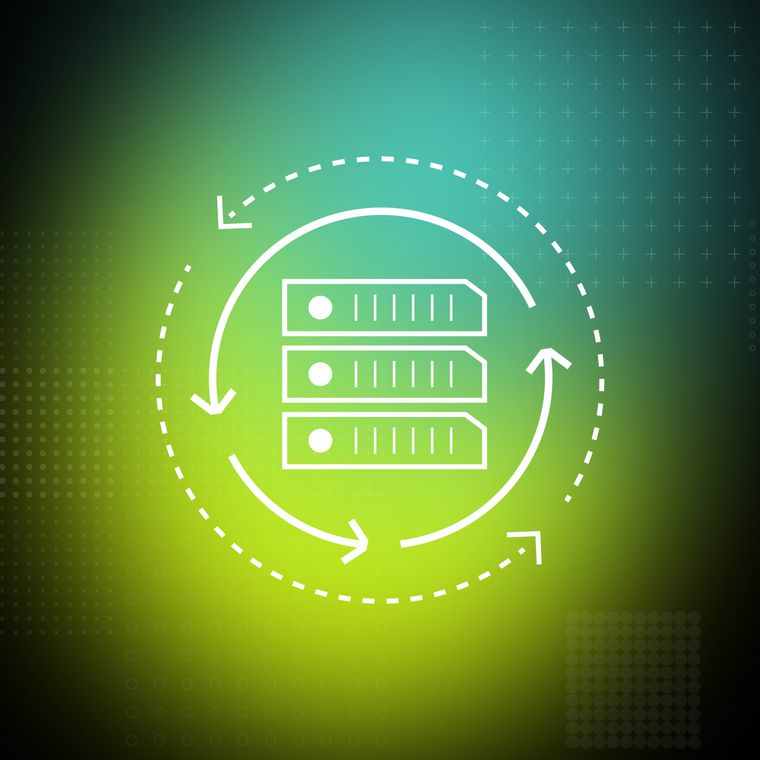Effective Attack Surface Management Strategies to Prevent Data Breaches
Shrink your exposure and block attacks with these proven attack surface management strategies.
July 28, 2025
Attack Surface Management (ASM) is the continuous practice of discovering, mapping, and reducing every potential entry point across your digital environment. IBM's 2023 breach report reveals why this matters: the average incident persists for 277 days—204 days to identify and 73 days to contain. During this extended window, attackers move laterally through networks, exfiltrate personal information, and establish persistence after initial compromise through vectors like a phishing link sent to an employee's email address.
Cloud sprawl, IoT proliferation, and remote work have exponentially expanded digital environments, yet 39 percent of IT leaders still identify asset visibility as their primary security obstacle. This visibility gap creates blind spots where threats can establish footholds and persist undetected.
This guide presents three actionable ASM strategies that directly address the discovery and containment challenges highlighted in IBM's research: comprehensive asset discovery to eliminate blind spots, continuous vulnerability assessment to prioritize risks, and real-time monitoring to accelerate threat response.
1. Map Every Asset
Comprehensive discovery is the systematic process of identifying, cataloging, and managing every digital asset across your enterprise ecosystem. It creates a complete inventory of all technology touchpoints that could potentially be exploited by attackers.
You close breach windows only when you see every asset and assign clear ownership. IBM's 277-day average breach lifecycle proves how long blind spots let attackers linger, making comprehensive discovery the first non-negotiable step.
Modern environments hide assets everywhere: a developer spins up a temporary AWS instance on Friday, marketing trials a new SaaS tool on Monday, and operational teams deploy IoT sensors that never touch the CMDB. Shadow IT, orphaned cloud resources, sprawling SaaS subscriptions, and unmanaged OT devices expand infrastructure faster than manual inventories can track.
Effective discovery must span across all technology domains:
On-premises infrastructure (servers, workstations, network devices)
Cloud resources (multi-cloud instances, serverless functions, containers)
SaaS applications and third-party integrations
Remote endpoints and employee-owned devices
Operational technology and IoT deployments
Track progress with one metric: the percentage of unmanaged assets. Set a north-star goal below two percent and publish it on your security scorecard so every business unit knows hidden assets create unacceptable risk.
Email and collaboration accounts belong in this inventory, too. Abnormal surfaces dormant or compromised Outlook, Slack, and Teams identities, letting you deactivate unused accounts before an attacker weaponizes them; no different from decommissioning an unpatched server.
Combining automated discovery with disciplined ownership transforms visibility from an aspirational idea into a measurable control that shrinks the pathways adversaries can exploit. The benefits are substantial:
Elimination of security blind spots where attackers can hide
Reduced attack surface through proper management of forgotten assets
Accelerated incident response with complete environment visibility
Enhanced compliance and audit readiness with comprehensive asset documentation
Common Asset Discovery Challenges and Solutions
Legacy processes create friction when you modernize discovery because they were never built for cloud speed. Manual spreadsheets go stale the moment a developer commits new infrastructure-as-code, leaving you to chase missing entries long after the stack is live.
Solution: Implement API-driven discovery tools that integrate directly with infrastructure-as-code platforms to automatically catalog new assets as they're deployed.
Fragmented tooling worsens the problem: vulnerability scanners, CMDBs, and ticketing systems each capture partial truth, so inconsistencies creep in and ownership debates drag on.
Solution: Deploy a unified asset intelligence platform that serves as a single source of truth, with bidirectional integrations to existing tools and automated reconciliation processes.
Remote work multiplies endpoints outside traditional networks, while OT/ICS environments introduce proprietary protocols that standard scanners misread or disrupt. In industrial settings, even a harmless ping risks downtime, forcing you to rely on passive detection methods that rarely map every device.
Solution: Adopt agent-based discovery for remote endpoints and specialized passive monitoring tools for OT/ICS environments that safely identify assets without disrupting operations.
2. Continuously Assess Vulnerabilities and Misconfigurations
Quarterly scans are obsolete; exploits emerge and spread in hours, so you need continuous vulnerability assessment woven into every layer of your security stack. This approach shrinks the exposure window by identifying weaknesses the moment they appear—whether in cloud consoles, containers, or SaaS configurations—and immediately routing them to the teams that can fix them.
Modern programs embed this discipline directly into existing frameworks. Asset data from discovery feeds straight into scanners, findings flow into SIEM and SOAR for enrichment and response, and remediation status rolls back into dashboards that let you measure risk reduction in real time.
A repeatable workflow keeps the process predictable. Auto-prioritize findings using exploitability (EPSS), external exposure, and business context. Push tickets to the right patch team with clear SLAs measured in hours, not weeks. Verify fixes through rescans and close the loop automatically.
If you still rely on spreadsheets, you're blind to fast-moving threats. Automated scoring engines rank thousands of vulnerabilities in seconds; there no manual triage required. Coverage must extend beyond traditional networks to include agentless cloud posture checks, container image scanning in the CI/CD pipeline, and drift alerts for SaaS misconfigurations like overly permissive OAuth scopes or exposed storage buckets.
When these signals converge, Abnormal's behavioral anomaly alerts confirm whether a vulnerability is being exploited in the real world, letting you cut through the noise and focus on breaches in progress instead of theoretical gaps.
Vulnerability Assessment Best Practices
Implement Continuous Discovery Automation - Deploy scanners that operate 24/7 without human intervention, automatically identifying new assets within 30 minutes of deployment and immediately launching assessments. Configure these tools to feed results directly to a unified dashboard that provides real-time visibility across all environment types.
Adopt Exploit Prediction Scoring - Implement the Exploit Prediction Scoring System (EPSS) alongside traditional CVSS scores to achieve data-driven prioritization. This methodology predicts the likelihood of vulnerability exploitation within the next 30 days, allowing teams to focus on the 2-3% of vulnerabilities that represent 90% of exploitation risk.
Integrate Security Tools Through APIs - Establish bidirectional API connections between vulnerability scanners, SIEM platforms, SOAR tools, and ticketing systems. This integration enables automated correlation with threat intelligence and triggers incident response playbooks that can isolate high-risk systems without manual intervention.
Implement Risk-Based Prioritization Frameworks - Deploy a scoring engine that automatically weighs multiple factors: technical severity (CVSS), exploit availability, external exposure, business criticality of the asset, and compensating controls. This approach reduces noise by up to 80% by suppressing low-impact vulnerabilities while highlighting truly critical issues.
Leverage Real-Time Threat Intelligence Feeds - Subscribe to commercial and open-source threat intelligence platforms that provide real-time data on actively exploited vulnerabilities. Configure these feeds to automatically correlate with your vulnerability data, creating high-priority alerts when an identified vulnerability in your environment matches active exploitation in the wild. Abnormal's behavioral intelligence can supplement these feeds by identifying anomalous activities that indicate exploitation attempts in progress.
3. Monitor the Attack Surface in Real Time and Respond Fast
Real-time coverage starts with continuous discovery delta alerts that flag every new asset, DNS change, or firewall rule the moment it appears. Coupling those alerts with external threat-intelligence feeds surfaces the handful of exposures that genuinely matter. Integrating findings with threat-intel enrichment immediately highlights Internet-facing assets tied to active exploit campaigns, eliminating the need to sift through hundreds of benign notifications.
Automated validation keeps you honest. Continuous red-teaming or safe attack-path testing confirms whether a vulnerability is exploitable right now, not just theoretically severe. When validation succeeds, the issue routes straight into SOAR playbooks, creating a ticket, isolating the asset, and starting the patch timer; no analyst intervention required.
Best practices that keep response times tight include:
Enforce response SLAs of under two hours for any critical, externally exposed finding
Pipe alerts into SOAR workflows for auto-ticketing, quarantine, and immediate validation rescans
Run monthly purple-team drills to verify detection → containment → remediation flows end to end
Abnormal feeds real-time behavioral detections, including unusual OAuth grants, dormant email accounts reactivated, or mass file downloads, directly into these same response pipelines. This added context tells you whether an exposure is merely theoretical or already under attack, enabling confident triage decisions.
Best Practices for Advanced Monitoring Technologies
Implement AI-Driven Asset Relationship Mapping - Deploy platforms that automatically build living graphs of your environment, connecting every device, container, and SaaS tenant with their vulnerabilities and business impact scores. These relationship maps should update in near real-time, allowing for instant impact analysis when new threats emerge.
Adopt Behavioral Analytics Across All Environment Types - Implement analytics engines that establish baselines for normal network traffic and user activity patterns. Configure these tools to detect subtle anomalies, such as a manufacturing controller suddenly communicating with an unfamiliar IP address, and trigger immediate alerts before the situation escalates to a breach.
Utilize Attack-Path Visualization and Simulation - Incorporate tools that can simulate how adversaries might pivot through your environment via misconfigurations, over-privileged identities, and outdated services. Ensure these simulations trigger automated controls that can break attack chains by revoking excess privileges or quarantining exposed hosts when critical paths are identified.
Extend Monitoring to Identity Surfaces - Implement comprehensive monitoring of human and machine credentials as a critical component of your Zero Trust journey. Monitor for anomalous authentication patterns, unusual privilege escalations, and suspicious access attempts across all identity providers and systems.
Establish Clear Exposure Metrics - Define and track key metrics such as mean time of exposure, average time to remediation, and percentage of critical assets with active attack paths. Report these metrics to leadership monthly and use them to drive continuous improvement in your security program.
Breaking the 277-Day Breach Cycle with Strategic ASM
Attack surface management succeeds when three disciplined strategies work in concert: comprehensive asset discovery, continuous vulnerability assessment, and real-time monitoring.
This triad directly attacks the 277-day breach lifecycle that plagues most organizations. Comprehensive discovery eliminates blind spots that attackers exploit. Continuous assessment slashes the time vulnerabilities remain exploitable. Real-time monitoring catches new exposures before threat actors do.
The business impact is measurable: reduced mean time to detect and contain breaches, lower remediation costs through faster response, and stronger compliance posture with complete visibility.
Embed these three strategies into your security program now. Assign clear ownership and track progress against concrete KPIs like percentage of unmanaged assets and mean time to remediation.
Abnormal's behavioral intelligence integrates seamlessly with these foundations, flagging anomalies and delivering context-rich visibility across your organization's email and connected systems. By analyzing communication patterns and detecting subtle behavioral changes, Abnormal provides the critical early-warning capability that complements your ASM strategy, particularly in identifying social engineering attempts that often serve as the initial entry point for attackers. Book a demo today to see how Abnormal strengthens your ASM program and helps close the breach lifecycle gap that leaves organizations vulnerable.
Related Posts
Get the Latest Email Security Insights
Subscribe to our newsletter to receive updates on the latest attacks and new trends in the email threat landscape.


